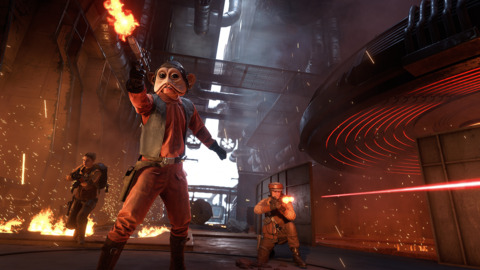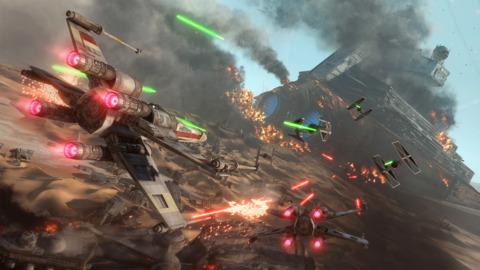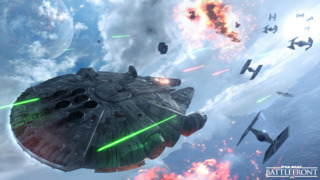VFX Talk notes for Star Wars Battlefront
By Cybexx 0 Comments

I recently attended a talk by Anders Egléus who was one of the VFX leads for Star Wars Battlefront. I'm not going to do a full blog post because I don't really think I can do justice to his fairly technical talk but I thought I would highlight some interesting bits.
Production on Star Wars Battlefront was 2 Years but the game was only in full production for 9 months.
At last count, including DLC, the approximate VFX asset counts were as follows: 5000 Emitters, 1500 Effect Containers, 300 VFX Textures, 450 Pixel Shaders, 50 Vertex Shaders.
The desire was for the effects to look like the effects from the original films but remastered to remove artifacts such as those left behind by optical printing. The team was instructed to not reference the original Battlefront games. Often movie assets where placed in-game on flipbook textures to directly compare against the realtime effects. They were shooting for an 80s pyrotechnic look with lots of sparks and self-shadowing smoke.

Compared to the Battlefield games there was more performance needed for rendering the models so the effects performance budget was smaller, their budget was just over 1 millisecond of frame time so they needed to use less particles than Battlefield 4.
The Frostbite engine has "Perfect" particle sorting since all the particles are rendered in a single draw call but this requires all particles to share a single texture atlas. There are low res and hi res versions of this particle atlas. Low res particles are always rendered behind high res particles.
To get around limitations of the Frostbite particle system the team adopted a cpu-based vertex animation system pioneered by Ghost Games (the Need for Speed team) to animate birds. They use a mesh particle which is a series of disconnected square polygons and then procedurally animate the vertices to move these polygons around and by doing so they effectively create a particles system within a single particle which is very efficient for rendering. Each Frostbite particle can represent 100-1000 particles to efficiently render lots of snowflakes on Hoth or a giant burst of sparks. This method is 80 times faster than rendering the same effects using just Frostbite's particle system.

This system is used for rendering some stuff that you might not expect, such as background dogfights. Particles were used to render X-Wing, TIE Fighters and projectiles to fake distant dogfights. A very impressive Aurora Borealis effect was created but did not make it into the game because the Lucasfilm team informed them that there is no Aurora Borealis on Hoth.
Some effects are movie textures with each movie frame split between data for normals and alpha / z-depth data. Others use Frostbite's Gnomon lighting system which is a volumetric effect pre-rendered from 6 different angles and then the angles are blended together along with vertex lighting to match the level lighting.
Some of the effects that did not make it into Battlefront have found their way into Battlefield 1.
The team was trying to mesh together the offline particle rendering that is used in film with the real time particle systems seen in games. Egléus is hoping to get a GPU-based particle system into future DICE games.
